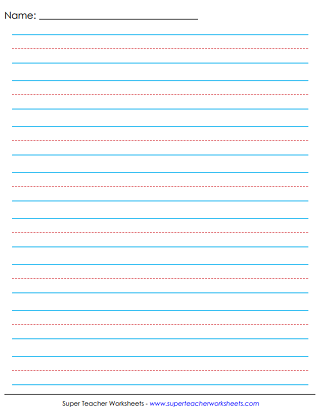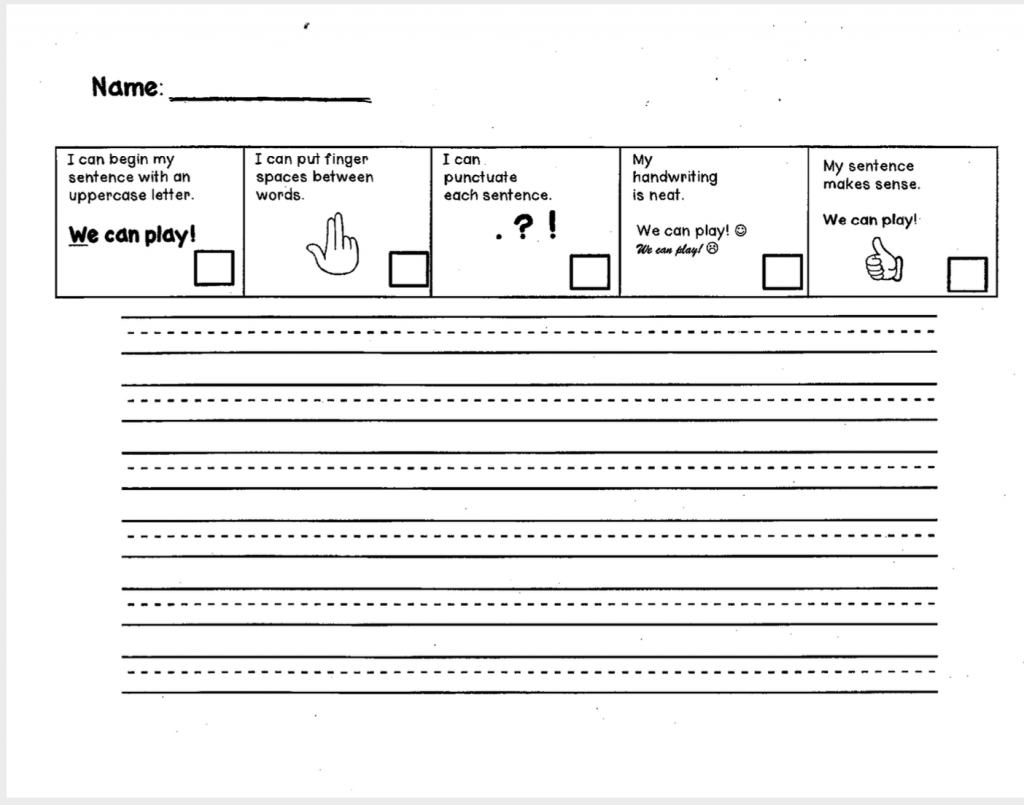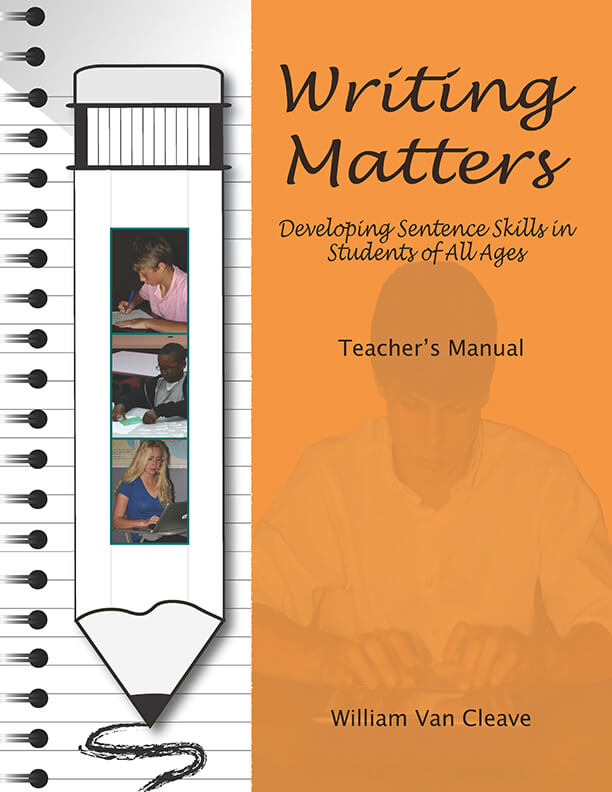Writing Sentences
Learning to write begins with first learning letter sounds, then attaching the sounds to letter names, and finally learning to print letter shapes. These three skills must be mastered to the point of automaticity in order for the greatest step in writing – composition.
In Grade One we spend a great deal of time learning how to print sentences because sentence writing is the foundation for all writing. In The Writing Revolution Hochman and Wexler describe sentence writing as a process in which “Producing even a single sentence can impose major cognitive demands on students, especially if it requires them to explain, paraphrase, or summarize sophisticated content.” (pg. 10) In other words, learning to write is a very big undertaking!
When writing at the sentence level students need to “decide what to say, which words to use, how to spell them, perhaps how to form the letters, and what order to place the words in.” (pg. 8) “Elementary students can practice their spelling and vocabulary words by writing original sentences, and they can acquire knowledge by developing questions about what they’re reading. At the same time, they can hone their handwriting skills.” (pg. 9) As you can see there are a lot of concepts packed into learning how to write even a single sentence.
Writing Skills and Activities
Our goals in Grade One are for students to write complete sentences with correct use of capitals and punctuation, as well as to use accurate spelling of common words. Words that are hard to spell should be spelled with logical sound use so that the reader can decipher the word and determine what it means. This kind of spelling is called “invented spelling”. The Writing Revolution strategies for sentence writing that apply to Grade One are to: (pg. 26)
- help students understand the concept of a complete sentence and to discern sentence boundaries
- help students understand correct word order
- provide practice with capitalization, punctuation, and using new spelling and vocabulary words
- serve as a comprehension check (when writing about newly learned subject matter)
- help students understand the meaning of subjects, predicates, fragments, nouns, and verbs
- encourage careful reading
We teach these concepts with activities such as extending fragments into complete sentences, unscrambling sentences, categorizing the four types of sentences (statements, questions, exclamations, and commands), developing questions, and extending sentences using the conjunctions because, but, and so. At first these skills are taught as a class together and with oral answers from the students. Student knowledge of the alphabet sounds and letter shapes is being mastered at the same time that we are talking about sentence construction. Once the students are confident in their letter printing skills they can begin writing sentences independently.
Student Work
Students write their sentences in notebooks with interlined style pages. Interlined means small dashes are printed across a page between an upper and lower solid line. The dotted line helps guide beginning writers to print noticeable size differences in small and tall letters. Writing topics will usually focus on journal style entries about personal events, short summaries about things being learned in school, questions about what is being learned in school, sentences using new vocabulary words, and completing stem sentences by including the conjunctions because, but, and so. Teachers lead class discussions about the chosen topic, then they model sentence writing, and finally the students copy the sentence. As student skills grow, this last step changes from ‘copying’ to ‘creating’ but a great deal of support is still provided through generating ideas in the discussions.

At the end of each school term we have students complete a self-check writing sheet. It will look like or be similar to the one below. For Term 1 we ask the students to copy one sentence. At the end of Term 2 students will copy one sentence and then compose a sentence of their own. In Term 3 they will write three sentences independently. They always have the option of writing even more – we won’t say no! We guide them through the self-check part of the worksheet ensuring they have paid attention to their use of capitals and punctuation, as well as to having printed neatly.

Cognitive Science
In terms of the gradual release model of teaching, we repeat the ‘I do’ and ‘We do’ sequence for an extended period of time before the children attempt to do individual work. Grade One is usually the first time students are required to write on their own. It can be very intimidating to be presented with a blank piece of paper and to be told to put words on it let alone to make sure everything makes sense – with capitals and punctuation, please! Because most of these skills are new to our students, we do a lot of work together as a group to create the foundations of a writing schema (knowledge web).
Writing lessons are best taught by using the subject matter the students are learning. Grammar and writing lessons taught alone and without context are difficult to transfer into general use. To use the language of cognitive science, surface learning needs to be transformed into deeper structural learning in order for transfer to new situations to occur. This happens more quickly when writing skills are rehearsed using material that has already become familiar from Science, Social Studies, Health, etc.
A Very Short Summary
1. Automaticity in phonemic awareness, letter identification, and printing skills is necessary for beginning writers to experience success in writing.
2. Sentence writing is the first writing skill taught.
3. Sentences should be a complete thought using correct capitalization and punctuation.
4. Most Common Words should be spelled correctly and invented spelling used for non-decodable words.
5. Term goals are for students to independently copy one sentence by the end of Term 1, copy one sentence and compose one sentence by the end of Term 2, and compose three sentences by the end of Term 3.
6. Writing lessons are best taught in the context of subject matter students are already familiar with.
References



